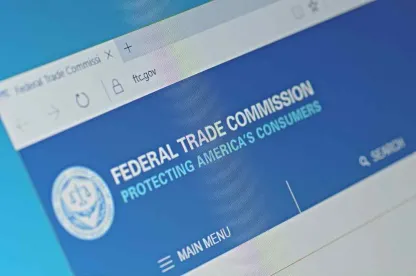Policing hospital mergers has become a top enforcement priority among federal antitrust enforcers. In 2020 alone, the FTC sued to block three hospital transactions (Jefferson/Einstein, Methodist Le Bonheur/Tenet and Hackensack Meridian/Englewood) and submitted letters to state regulators opposing two transactions (Community/Hendrick and Community/Shannon), while the DOJ has challenged one transaction (Geisinger/Evangelical).
On December 8, the FTC lost the first of its 2020 hospital merger challenges. United States District Judge Gerald Pappert denied the FTC’s motion for a preliminary injunction to block the combination of Philadelphia-area Thomas Jefferson University and Albert Einstein Healthcare Network. The FTC quickly appealed, but the Third Circuit denied the FTC’s motion for an injunction pending appeal. (The FTC has since won a second merger challenge: On December 23, Methodist Le Bonheur abandoned its planned acquisition of two Tenet hospitals in Tennessee.)
Judge Pappert’s opinion is notable because is suggests that inconsistent testimony from health insurance companies may be enough to doom a government lawsuit seeking to block a hospital merger.
Case Background
The FTC sued to block the Jefferson-Einstein combination in February. The FTC argued that the deal would substantially lessen competition in markets for inpatient general acute care (“GAC”) hospital services and inpatient acute rehabilitation services. According to the complaint, the merger would create the largest hospital system in the greater Philadelphia area and give the combined company at least 60% of the GAC market in Northern Philadelphia and at least 45% of the GAC market in Montgomery County. The FTC also alleged that the merger would give the parties 70% of the market for inpatient rehabilitation services.
Jefferson Hospital countered by arguing that the region’s four largest commercial insurers, United, Aetna, Cigna and Independence Blue Cross (“IBC”), could easily exclude Jefferson from their network without suffering negative consequences. Instead, it argued that providers would suffer if they were excluded from a major insurer’s network. IBC had threatened to exclude Einstein and Jefferson from its network in prior rate negotiations, so even together, the healthcare systems would have little leverage to impose rate increases on insurers in the region.
Einstein also pushed back against the FTC’s claims, explaining that the hospital accounting for 70% of its revenues, Einstein Medical Center Montgomery, is a “safety net hospital” with well over 80% of its patients insured by the Government. Ultimately, Medicare reimbursement rates and medical assistance coverage were failing to cover the costs of patient care. Einstein views the transaction as a way to diversify its payor mix, thereby alleviating its financial struggles, with little chance that the merged parties could tip the scales of power against insurers.
The FTC and defendant providers’ experts agreed that the relevant inquiry was whether the merger would increase the bargaining power of the merged providers versus the insurers such that insurers would be forced to accept higher reimbursement rates. But they diverged on the outcome of that inquiry. The FTC’s expert drew narrow lines around three different geographic markets by analyzing patient diversion ratios, and then used that analysis to suggest that Einstein and Jefferson had to be included in insurer networks in those geographic markets, concluding that together, the merged providers would cause insurers to pay higher rates. The Government’s expert went further to say that those higher rates would pass through to health plan members, causing higher insurance premiums as well. The defendants’ expert disagreed, focusing less on patient diversion ratios and more on the negotiating power of the region’s large insurers, and their ability to market health plans that excluded Jefferson and Einstein.
Testimony and evidence from two of the four largest insurers in the area cut against the FTC’s claims. Aetna, the second largest commercial payor in the region, had no concerns about the merger. United already successfully markets a commercial plan that excludes Jefferson and had considered excluding Einstein as well. United never provided testimony suggesting that it would pay higher rates if Jefferson and Einstein merged, or that its network would be unmarketable without Jefferson or Einstein.
Cigna and IBC’s testimony somewhat supported the FTC’s claims. Cigna, the smallest of the big four commercial payors, testified that it could not exclude both Jefferson and Einstein providers from its network and would pay higher rates if the parties merged. IBC said that it would pay higher rates if the merger was successful and that if Einstein and Jefferson’s hospitals were excluded from its network it may still be marketable but “would be much less attractive.”
The District Court’s Opinion
Judge Pappert found the FTC’s arguments and economic analyses hard to buy without firm backup from insurers. The Court reasoned that the alleged geographic markets were likely flawed in light of commercial realities for insurers and harshly criticized cherry-picked insurer testimony suggesting that the merger would cause increases in rates when the evidence as a whole belied that conclusion.
The Court rejected the FTC’s bid for a preliminary injunction enjoining the merger in part because the alleged geographic markets did not “correspond to the commercial realities of the industry.” The Court recognized that the mathematical analysis of patient diversion ratios used to draw the boundaries of the three alleged geographic markets was accurate, but that there was no evidence that patient preferences (as reflected in diversion ratios) aligned with insurer preferences when creating a network.
The Court did not find the FTC’s alleged market for acute rehabilitation services convincing either. Providers’ inpatient acute rehabilitation service offerings did not figure heavily into insurers’ decisions on which providers to include in a network and “few health plan members ever require inpatient acute rehabilitation services,” so they do not choose health plans based on those offerings. Likewise, employers seldom inquired about rehabilitation services when choosing health plans. Therefore, Judge Pappert did not believe that insurers would be pressured to include Jefferson and Einstein’s rehabilitation facilities in their networks, or that the merging parties could use their combined rehabilitation services to force insurers to pay higher rates.
The Government relied on Cigna and IBC’s testimony to support its alleged geographic market, but the Court looked beyond that testimony. Cigna’s testimony was inconsistent—it claimed that it would pay higher rates but also that it does not rely on Jefferson to be included in its networks. Cigna also did not perceive a Montgomery area submarket for general acute care until prompted by the Government.
IBC’s testimony was even more problematic. Judge Pappert found that it was not supported by IBC’s own documents, which showed that IBC could offer plans without Jefferson and Einstein. Instead, Jefferson and Einstein stood to lose tens of millions of dollars if they were excluded from IBC’s network. The Court found that IBC had a “clear motive, other than antitrust concerns, to oppose [the] merger”—it “does not want healthcare providers competing with it in the health insurance market” and “wants to avoid [ ] not having a larger network than its competitors, i.e., becoming any less dominant in the marketplace than it already is.”
The FTC’s avoidance of Aetna and United’s testimony did not go unnoticed. The Court credited the testimony of the area’s second and third largest insurers and found that it severely undercut the FTC’s proposed geographic markets, proposed market for rehabilitation services and argument that the merger would lead to higher rates for insurers and higher premiums for patients. In the end, Judge Pappert held that the Government failed to establish that it had a likelihood of success on the merits and failed to show that the merger posed a credible threat to competition.
The FTC promptly appealed the decision, arguing that it was “legal error to reject the undisputed results in favor of an amorphous ‘commercial realities’ standard.” A panel of three judges from The United States Court of Appeals for the Third Circuit denied the FTC’s emergency motion for an injunction pending appeal without discussion. The appeal remains pending and the merger (although not enjoined) has not closed.
Key Takeaways
- Scrutinizing mergers between healthcare providers remains a top enforcement priority among federal antitrust enforcers. Even in the midst of a global pandemic, FTC has shown a willingness to devote scarce enforcement resources to block hospital transactions that it views as anticompetitive. Even DOJ, which traditionally does not handle mergers between health care providers, sued to block a transaction in 2020.
- Insurer testimony often decides hospital merger cases, but courts do not accept insurers’ opinions at face value. Where insurers disagree with each other, or where insurers’ own documents contradict their testimony, courts may reject their opinions as not credible.
- Courts are sensitive to bargaining power in payer-provider negotiations. Where the health insurance market is more concentrated than the hospital market, courts may hesitate to find that a transaction will give hospitals the power to raise prices to insurers.
- Whether or not Judge Pappert’s opinion is affirmed on appeal, merging health care providers should continue to assess likely testimony from insurers in determining the risk that their transaction will face opposition from regulators.






 />i
/>i
